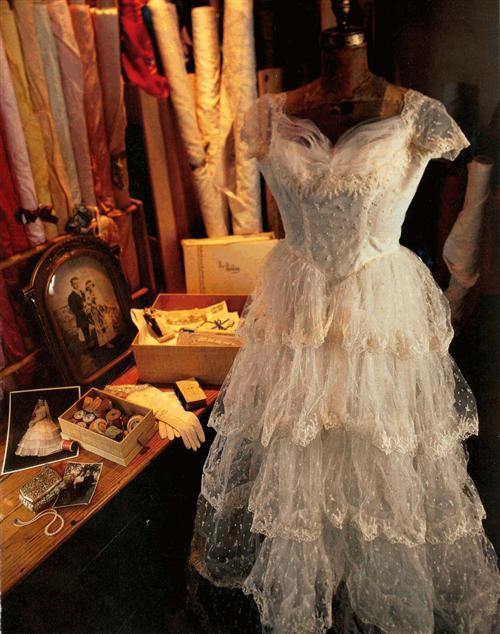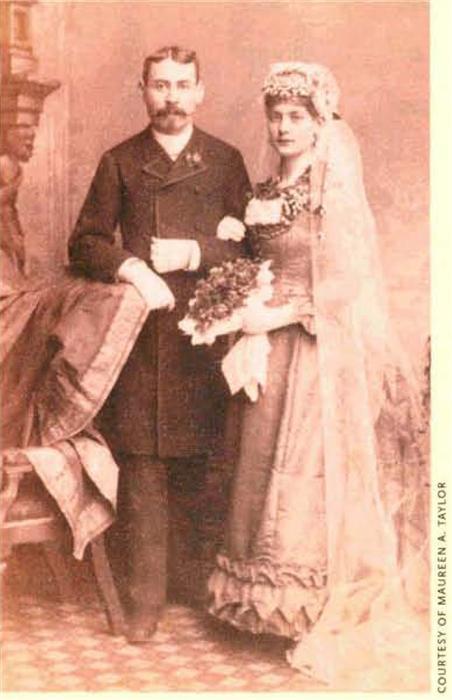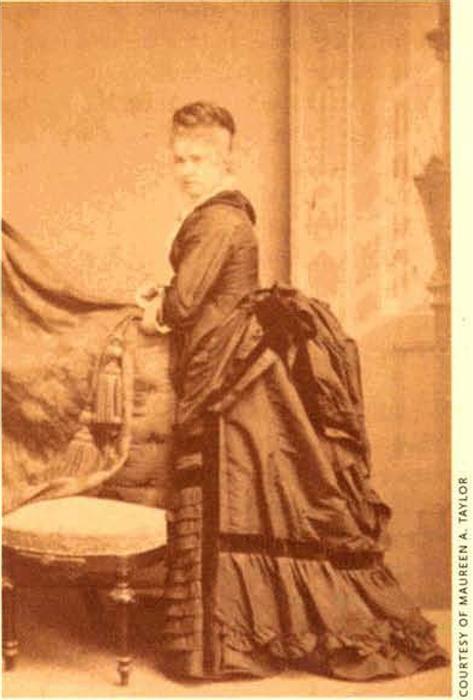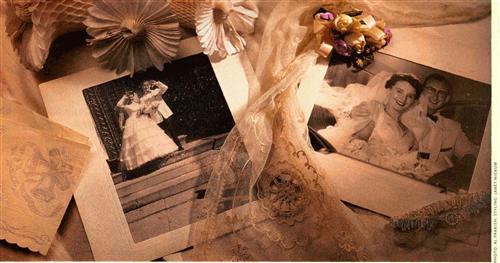Sign up for the Family Tree Newsletter Plus, you’ll receive our 10 Essential Genealogy Research Forms PDF as a special thank you!
Get Your Free Genealogy Forms
"*" indicates required fields

Modern brides can base their vintage weddings on a particular time period or historical theme, such as the Victorian era or the glamorous 1920s. Nancy Eaton, author of Your Vintage Wedding (HarperCollins), even suggests picking a time period that coincides with collecting hobbies or favorite movies. Other couples plan vintage weddings with a family history theme — re-creating a family event or ethnic traditions.
Planning a period wedding based on family history is easier than you might think: Looking at a family tree, you might discover wedding parallels such as a date popping up over and over. For instance, my husband and I were married on the same day as my parents — but 34 years later. You can incorporate family heirlooms such as a wedding ring, gown or veil. Or replicate traditional recipes or wedding menus for the reception.
The boom in period weddings may reflect the popularity of genealogy or simply nostalgia for a more “romantic” time. Whatever the reason, vintage-wedding planning means researching the history of the time period or traditions you want to represent — in short, it’s a lot like genealogy. And even if no one in your family is preparing to tie the knot, learning more about your ancestors’ wedding traditions can shed new light on this crucial point in your pedigree charts, making a marriage more than just a date when two branches of your family tree came together. You can use what you discover about wedding traditions to make your heritage albums more accurate and colorful. You might actually get some insight into Great-grandma’s wedding photo, probably one of the few images of her.
And you never know — you or someone close to you might suddenly get shot by Cupid’s arrow and have a hankering for “something old, something new, something borrowed, something blue.” Particularly the part about “something old.”
 Your ancestors’ wedding wear
Your ancestors’ wedding wearThe traditional fairy-tale white wedding derives from the Victorian ideal established when Queen Victoria married Prince Albert. Her Majesty set the standard for 19th-century brides to be married in elaborate white gowns.
Throughout history, however, and even during the Victorian period, many colors of gowns were acceptable for weddings — don’t draw the wrong conclusion if your ancestor was married in something other than white. An old English rhyme describes the superstitions associated with some colors: white (you’ve chosen all right), gray (you’ll go far away), black (you’ll wish yourself back), red (you’ll wish yourself dead), green (ashamed to be seen), blue (he will always be true), yellow (ashamed of your fellow), pink (your spirit will sink) or brown (you will live out of town).
Dresses reflected the fashions of the era in which the couple married. Stylish shades for wedding dresses varied from blue, signifying fidelity, to purple, as a memorial to the Civil War dead. In the 1870s and 1880s, fashion-conscious brides selected dress colors from the new synthetic dyes. That’s one reason why the woman pictured at right proudly posed in her brown corded-silk dress on her wedding day — she was making a fashion statement.
Economic circumstances also dictated the color of your ancestor’s wedding gown. Purchasing a white dress to be worn just once was often expensive and impractical, so you’ll find that many women on your family tree didn’t invest in this indulgence. Instead, women who lacked the means for a special dress either borrowed one or wore their best Sunday outfit. My maternal grandparents, for example, didn’t marry in the Victorian fashion of white; my grandfather wore a good suit, and my grandmother purchased a new dress for the occasion.
Certain accessories also came to be associated with brides. Many brides chose to decorate even the plainest attire with veils, flowers and bows. Economical women chose to borrow a veil because wearing something borrowed is a wedding tradition. That means the veil may be the true family heirloom.
Vintage-clothing stores now sell wedding dresses for those not fortunate enough to inherit one. Other brides with a yen for history have new dresses made from old designs, such as those in Wedding Fashions 1862-1912: 380 Costume Designs from “La Mode Illustrée.” Or pick up Ideas from Vintage Wedding: Simple Ideas for Creating a Romantic Vintage Wedding. Some of the major pattern companies such as Butterick and Vogue will search their archives for old patterns — wouldn’t it be fun to have the pattern for your great-grandmother’s wedding dress? Or take a look at the variety of historically accurate patterns at Saundra Ros Altman’s <www.pastpatterns.com>.
With this ring…
The rings symbolizing your ancestors’ marriage were worn on the left hand because ancient Egyptians thought a vein ran from the ring finger to the heart. Your ancestors might have followed these other ring traditions mentioned in A Bride’s Book of Wedding Traditions by Arlene Hamilton Stewart (Hearst):
? Gimmal ring: A three-part ring divided upon engagement among the prospective bride, groom and their witness. All three rings were reunited on the wedding day and worn on the bride’s finger.
? Fede ring: Two hands clasp a heart in the middle of the band, signifying faith.
? Posie ring: In the Victorian tradition, instead of a name and date, couples engraved a saying (“posie”) on the inside or outside of the band. Inscriptions on the inside of the wedding band are still common.
? Regard ring: Each stone of the ring, usually a mix of precious and semiprecious stones, spelled out the betrothed’s name or nickname using the first letter of the name of the gem. For instance, according to Stewart, Mary would be spelled out with a Moonstone, Aquamarine, Ruby and Yellow diamond. Surely an expensive proposition for grooms, these rings were popular during the Victorian period when individuals assigned meaning to every detail from the gown to flowers to gemstones.
Engagement rings are an old tradition, too, dating from King George III and his betrothed in 1761. But today’s predominant style of engagement ring is relatively recent. Most are patterned after the solitaire designed by Tiffany’s in the 1870s.

A crown of orange blossoms twined with diamonds was Queen Victoria’s choice for floral wear — something out of reach of even the wealthiest brides when she married Prince Albert. Flowers are so much a part of a wedding that even men have long worn small sprigs of blossoms attached to their coats in honor of the event. Traditionally, people have worn flowers that “ensure a fruitful marriage, that speak of the love between the bride and groom, and that celebrate the continuity of life,” according to A Bride’s Book of Wedding Traditions. The same flowers chosen by today’s brides — roses, myrtle, orange blossoms, violets — were first used by the Romans and Greeks.
Apart from the bride and the flowers, all eyes will be on the wedding cake. Most brides today have a multilayered cake with all the trimmings in icing, and of course a couple of statues on top. This type of cake originated in the 19th and early 20th centuries. It’s a bride’s cake, as opposed to a traditional groom’s cake, which was a liquor-soaked fruitcake or chocolate cake cut into squares and put in small white boxes for guests to take home. Your single ancestors would have placed the groom’s cake under their pillows in hopes of dreaming of their future loves.
Wedding guests expect to be fed more than cake, of course, and the wedding feast is an old tradition. You can learn about the food your ancestors served at their shindig by studying wedding-advice columns in period magazines, old cookbooks and wedding planners or etiquette manuals. Wedding menus varied with every rime period, from elaborate wedding breakfasts for the immediate family and a luncheon for the guests, to simple catered affairs held in small restaurants and Veterans of Foreign Wars halls.
Wedding pictures
When you compare your ancestors’ wedding pictures, you’ll notice historical trends in wedding photography. Early wedding photos were merely formal portraits of the bride and groom taken in the photographer’s studio. During the Victorian era, bridal albums became popular and added pictures of the wedding parry and gifts. Wedding albums in the 1920s and 1930s featured posed shots, as well as a few candids. In the 1950s, smaller cameras enabled photographers to start taking pictures at the wedding ceremony and reception. Until the mid-1960s, all photographs were black-and-white unless they were hand-colored.
For a vintage wedding, mimicking the photography style that was popular in the period you’re trying to copy would be possible only from the advent of photography in 1830. Whatever period interests you, take some time to educate yourself and your photographer about images from that era.
Who gets to be in the pictures? You’ll even find historical precedents for the number of people in the wedding party. Alice Roosevelt had no bridesmaids at her 1906 wedding to Ohio Congressman Nicholas Longworth. Queen Mother Elizabeth had eight. If you’re planning a vintage wedding, just select the number that?s comfortable for your setting — and don’t forget to dress them in period attire to match the bride and groom.
Places in the heart
In wedding-speak, destinations used to mean a place couples spent their honeymoons — though the origin of the term honeymoon itself is debatable. According to one theory, honeymoon derives from the Scots-Irish tradition of bridal abduction. Into the 18th century, a Scots-Irish man would steal a girl away from her family (sometimes against her will) and hold her in hiding until the passing of one full moon. This would ensure the family’s approval of the marriage (especially in the case of a prenuptial pregnancy). In the early 20th century — when honeymoons were more relaxed — wealthy newlyweds sailed to Europe. In the 1950s, Atlantic City became a popular honeymoon choice for East Coast couples on a budget.
But a vintage-wedding destination refers to a historic place to hold the wedding, often far from the bride’s hometown. Historic houses rent facilities for wedding events, as do hotels. Looking for a historically romantic place? Contact the local historical society or tourist agency to find out about historic locations in your area.

If your interest in old weddings is more than merely genealogical or historical, and you’re actually planning someone’s wedding, be aware that vintage weddings often end up as composites of historical styles — with dresses from one dare, music and accessories from another. But this doesn’t have to be the case. The authenticity is in the details, and they’re easy to plan:
? Pick a theme and time period you want to emulate; you might copy an ancestral wedding or model the wedding after that of someone famous, such as Queen Victoria.
? For inspiration, visit your local historical society and find wedding memorabilia from the period — invitations, menus, programs, sheet music and photographs. If you’re copying a family wedding, ask relatives if they have photographs or other memorabilia from the event.
? Look to old cookbooks for a cake recipe and design from the time period.
? For a truly authentic 19th-or 20th-century wedding, read wedding advice that appeared in women’s magazines and later wedding-specific publications.
? Select a location with the ambiance of the time period, such as a historic house, an old hotel or even a local landmark built in the appropriate era.
? Make a list of the photographs you’d like in your wedding album. Unless a photographer is familiar with the contents of historical wedding albums, you’ll need to offer some direction.
Finally, remember to document each stage of your wedding planning, from the engagement through the honeymoon, to keep a record for future generations. After all your hard work, don’t forget to commemorate the occasion by creating a wedding scrapbook. Utilizing ail the wonderful products on the market today, you can incorporate gifts, sayings and copies of photographs. The scrapbook will last longer than a video, and everyone in the family will appreciate it.
And who knows? Maybe one of your descendants will decide to model her vintage wedding on your own carefully re-created event.
From the June 2009 Family Tree Magazine
ADVERTISEMENT

